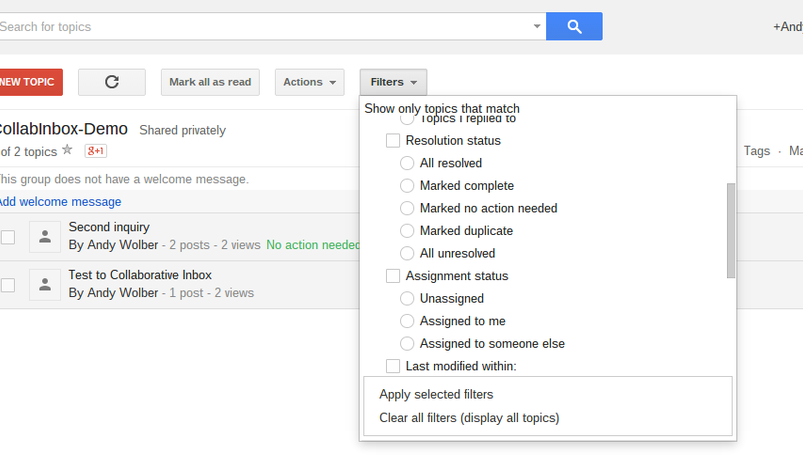Google Collaborative Inbox: Pros, Cons, and Alternatives

Ever felt like you’re drowning in a sea of emails? You’re not alone. In today’s fast-paced world, managing our inboxes can feel like a full-time job. Enter Google Collaborative Inbox, a feature of Google Groups designed to make email management a breeze—or at least less of a headache.
But is it the right tool for you and your team? Let’s unpack the good, the bad, and even some alternatives to help you decide.
Benefits of Google Collaborative Inbox
1. Easy on the Wallet
Who doesn’t love a good deal? Google Collaborative Inbox is part of Google Workspace, which means if you’re already using Google’s services, you won’t have to spend an extra dime. This is a real bonus for startups and small businesses watching their budgets.
2. Team Email Simplified
Imagine this: your entire team can peek into, manage, and respond from the same group email address without ever needing to share personal passwords. It’s like having a team huddle, but for emails. This not only keeps things secure but also makes sure everyone’s on the same page—literally.
3. Streamlined Workflow
Nothing’s worse than stepping on each other’s toes. Google Collaborative Inbox helps avoid that awkward dance by letting you assign emails and update their status. It’s a clear, simple way to track who’s doing what, slashing response times and boosting teamwork.
Recommended read: Your Guide to Using a Gmail Shared Inbox for Customer Service
Drawbacks of Google Collaborative Inbox
1. Not Built for the Big Leagues
As your business grows, your tools need to keep up. Google Collaborative Inbox might start to feel a bit cramped, lacking advanced features like a knowledge base or live chat, which can be crucial for handling a larger volume of customer interactions.
2. Collaboration? Not So Much
Despite its name, Google Collaborative Inbox could do better in the teamwork department. It misses out on handy features like adding internal notes to emails, which can be a game-changer when dealing with complex issues or needing to provide extra context.
3. Clunky User Experience
Let’s face it, the interface isn’t winning any beauty contests. It’s not as intuitive or sleek as Gmail, and the lack of seamless integration with Gmail can interrupt your workflow, making it harder to keep productivity on track.
Alternatives to Google Collaborative Inbox
1. ProProfs Help Desk
Looking for something with a bit more oomph? ProProfs Help Desk not only offers a smooth shared inbox experience but also throws in a knowledge base, live chat, and surveys to sweeten the deal. It’s a robust option for those needing more comprehensive tools.
2. Help Scout
Help Scout makes managing shared inboxes feel like a walk in the park. Its user-friendly interface, coupled with features like automated workflows and detailed reporting, makes it a strong contender for teams prioritizing productivity and customer relationships.
3. Hiver
Already in the Google ecosystem? Hiver might be your best bet. It transforms Gmail into a powerful shared inbox, offering features like email tagging and analytics—perfect for teams wanting to stick with a familiar interface.
4. Front
If you’re willing to invest a bit more, Front could be the way to go. It integrates emails, apps, and teammates into one view, offering advanced collaboration tools that can significantly enhance how you communicate and work together.
Conclusion
Google Collaborative Inbox offers a straightforward, cost-effective solution for small teams or startups. However, as your business expands, you might find yourself needing more from your tools.
Whether it’s ProProfs Help Desk for its all-in-one capabilities, Help Scout for its ease of use, Hiver for its seamless integration with Gmail, or Front for its advanced features, the right tool is out there. It all depends on your team’s size, needs, and budget. Choose wisely, and watch your team’s email management transform from a chore into a strength.



